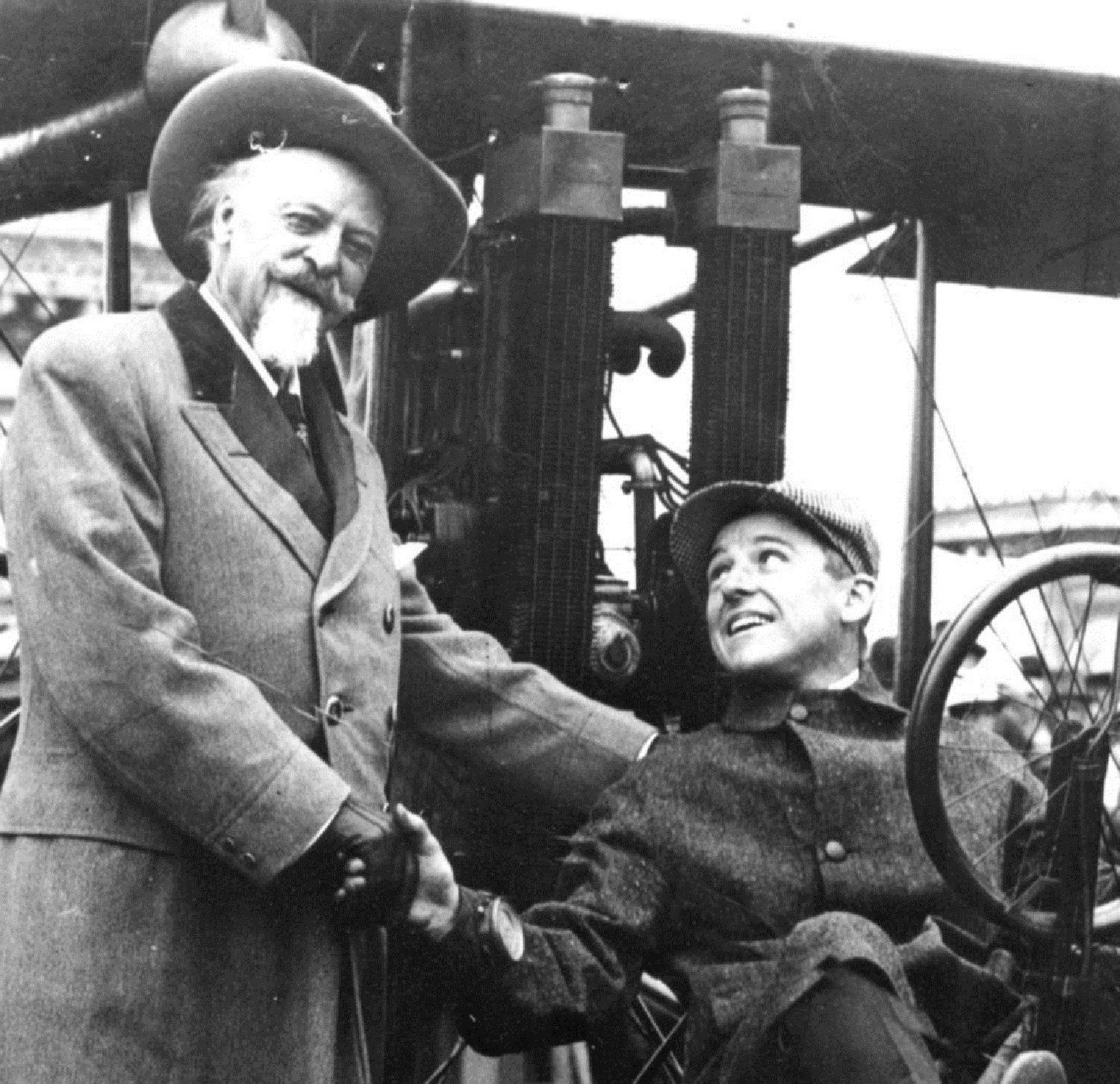
Foil: 9 Panel: 1 Column: 4 Line: 1
Wall of Honor Level:
Air and Space Friend
Honored by:
Mr. Gary Shanebeck
Arthur R. Smith, 1890-1926, was Fort Wayne Indiana's "Bird Boy." He was a pioneer of aviation, a creative thinker, and a hard worker whose self-confidence and faith brought the thrill of flight to legions of people across the U.S. and Japan.
Just two years after the Wright Brothers flight at Kitty Hawk, and having only seen an airplane in a magazine, fifteen-year-old Art convinced his parents that he could build a flight-worthy machine and win a prize sufficient to save his father's diminishing eyesight. His parents mortgaged, then lost, their home so that he could realize his dream. Art's determination and perseverance instilled similar faith in his best boyhood buddy, Al Wertman, and in his future wife, Aimee Cour. Young Art and Aimee eloped by plane, crashed, and were married while in their hospital beds.
A fancy flier for years, and dubbed by the Dayton News, the "World's Greatest Stunt Flyer," Art believed that his amazing exhibitions across the country could further the advancement of aviation proving both its practicality and its safety. By understanding speed and attack, he believed he could refine his machine, continually pushing its performance envelope. With hard thinking and hard work, he could help bring aviation out of the military realm and into a peaceful realm of commerce and transportation.
Art was honored with hundreds of medals in his young life, from presidents and heads of state, but one specially treasured was received when he was twenty-one from Buffalo Bill Cody at the 1915 San Francisco Exposition (see photo). There Art flew fantastic, illuminated night flights and set the stage for his future aviation and ambassadorial trips to Japan.
The slight, rosy-cheeked pilot built dozens of machines for straight and for fancy flight. Art was the first stunt flyer and the originator of skywriting. He was the first American to loop the loop. He was holder of 58 medals won at aviation events. He also developed a patent for dual controls to improve the safety of instructing pilots, and, at the outbreak of World War I, was a civilian instructor for the U.S. Aviation Corps at Langley Field in VA. During the war he helped develop the army parachute.
Later he flew as a test pilot at McCook Field in Dayton, OH, in Florida, and in Texas. In 1923 Art became a pilot for the U.S. Air Mail Service where he specialized in night flying and testing new equipment. Art moved to Cleveland, and the overnight mail route between New York and Chicago became Art's territory. It was on a mail trip from Chicago to Bryan, OH, testing a Curtiss Carrier Pigeon, that Art crashed and burned in bad weather.
Art and Aimee had divorced years before, and Art never remarried. Although his parents were his sole survivors, his forever-youthful exuberance for flying and his fine character attracted thousands to his funeral train and burial in Ft. Wayne. Pilots from Cleveland, McCook Field, and Bryan offered flowers from the air.
After Art's death Orville Wright said, "Art Smith was a fine fellow and a very able flyer, and I am shocked to learn of his death." Charles Lindbergh, returning from his famous flight, circled three times over Fort Wayne, IN as a tribute to his friend.
In 1911 fifteen years before his death Art wrote, " ... We are only pioneers, but we are pioneers with a great idea. Sometime in future centuries the whole world will be revolutionized by that idea. Then it will know the value of the hope and the thrill we feel as our aero planes rise from the earth, pass through the clouds, and fly high in the clear upper air." With the Air Mail Service, he was part of the development of the transcontinental air route, night flying and the lighted airway. Years hence The National Advisory Committee for Aeronautics concluded that "There has been no more valuable experiment in aeronautics, and certainly none contributed more directly to the demonstration of the practical value of air transportation and the advancement of aeronautics generally." Art would be glad to know he helped his prophecy to come true.
Wall of Honor profiles are provided by the honoree or the donor who added their name to the Wall of Honor. The Museum cannot validate all facts contained in the profiles.
Foil: 9
All foil images coming soon.View other foils on our Wall of Honor Flickr Gallery
